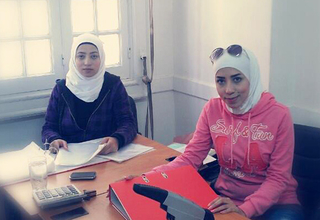Now in its fourteenth year, the Syria crisis marked one of its worst years in 2023, as multiple challenges converged to place lives at risk. Today, the situation has escalated to unprecedented levels, with 16.7 million people requiring humanitarian assistance throughout the country.
Among them, more than 8 million are women and girls, around 4.1 million of whom are of reproductive age. It remains one of the largest displacement crises globally, with more than 12 million Syrians forcibly displaced. Approximately 5.6 million refugees are hosted by neighbouring countries including Türkiye, Lebanon, Jordan, Iraq and Egypt, nearly half of whom are women and girls who face mounting risks of violence, exploitation and lack of access to essential services. Communities throughout the north-west are still recovering from the impact of the earthquakes that struck the country in February 2023, at a time when humanitarian needs were already at an all-time high.
Women and girls’ rights, including access to services that are critical to their health, well-being and lives, have been an unseen casualty of the conflict. Gender-based violence is pervasive, and child marriage and digital violence are on the rise. Discrimination and inequalities continue to limit women’s prospects, exposing them to increased risks of sexual exploitation and abuse. The large number of female-headed households are particularly vulnerable.
Thirteen years of conflict have also crippled the health system. More than half of facilities have closed or are partially functioning, and there has been a massive exodus of health workers. In north-west Syria alone, the earthquakes left an estimated 133,000 pregnant women, as well as breastfeeding mothers and menstruating girls, struggling to access essential health care, support and supplies. Rates of acute malnutrition are also rising among pregnant and lactating women as hunger knocks on the door for more than half the country.
